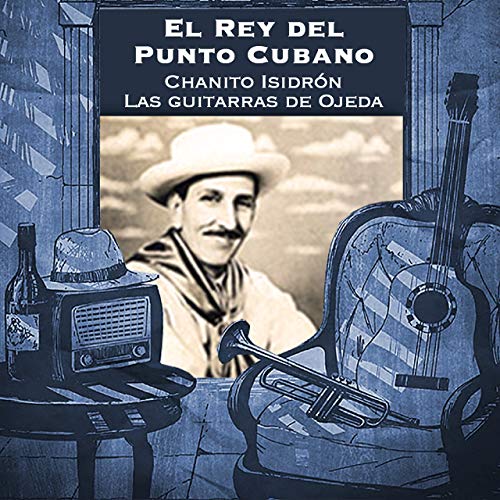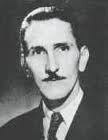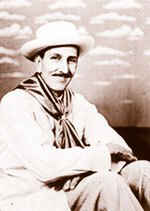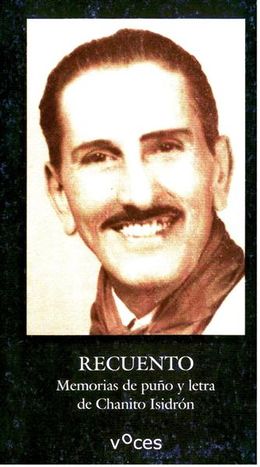“THIS IS CUBA CHANITO!”, THE PHRASE IMMORTALIZED THE KING OF CUBAN POINT GUAJIRO, CHANITO ISIDRÓN. VIDEOS.
Cipriano Justino Isidrón Torres better known only as “Chanito” Isidrón has been proclaimed as King of the “Punto Cubano”, a rhythm born in the mountains of Cuba, who cultivated Guajira music in the fusion radio of the time in the decades of the 1940s and 1950s.
The phrase that immortalized him “This is Cuba Chanito!” It was used among Cuban repentistas and was addressed to the Guajiro poet who on September 26 had one more anniversary than his birth.
Born in Calabazar de Sagua, Villa Clara, his parents were from the Canary Islands. When he was young he began to work the land, but after an accident, he had to leave these tasks and dedicated himself to music.
Since 1931 Chanito Isidrón decided to start touring, accompanied by his guitar, the towns of Villa Clara. Since then he was known for his bearing, tall and slim figure, always smiling like the elegant poet from Las Villas. His poetic and narrative capacity made him an artist admired by the general public.
With his stage name “Chanito Isidrón” he became one of the most popular repentistas in Cuba. His work on the radio and later on television, along with other prominent performers of the genre, led to the popularity of the tenth and made it resurface in a sympathetic and colloquial way.
Chanito was a poet with a mind sparkling in controversy. His most important tenths and verses were ‘Amores Montaraces’, which in 1938 served him to make tenth novels to be broadcast on the radio.
 VIDEOS- CHANITO ISIDRON SINGS..
VIDEOS- CHANITO ISIDRON SINGS..
HIS CONTRIBUTION TO THE CUBAN GUAJIRA
He composed Arturo and Magdalena (1939), Abnegación (1941) and Diario de una orfana (1943). He came to the radio in Santa Clara in 1936, in various programs dedicated to peasant music. The climax of his popularity was reached in Havana, where he moved in 1941.
He triumphed in the program “Looking for the prince” of the Cuban point and later he settled in the space “Dímelo Cantando” of the radio station Radio Lavín, later known as Mil Diez. His Cuban point was also heard on the Radio Cadena Azul station in Havana, the most listened to in Cuba at that time, hiring him to write Guajiras novels made and sung in tenths.
Several of his novels were unpublished, among them:
The Fatal Footprint (1943)
Beyond love (1944)
The tragic loves of Gloria Rangel, the latter partially published in 1986.
His spirit was notable for the way he presented his writings and decimas, such as the one that Radio Mambí was broadcasting then, “El Guateque de Apolonio” from the CMQ, and the famous “How Cubans think.” Critics agree that the poet stood out for the aggressive humor that he printed on his verses. The last thing the poet wrote was the saga of the legendary hero Manuel García, Rey de Los Campos de Cuba (1985), a poetic biography of the social bandit son of islanders who fought for the independence of Cuba.
He also acted on television. Those who ever listened to him remember his humor when improvising. In addition, he wrote arduously and published verses and prose texts related to peasant music. Although many of his works were lost in time.
In 1962 he retired but remained linked to peasant genre programs, such as Palmas y Cañas, one of the oldest on Cuban television, with several decades on the air.
In 2003 the Chanito Isidrón Prize for Novel in Tenths was created, in homage to him, by the Carlos Loveira Workshop for the Creation of the Novel, sponsored by the National Union of Writers and Artists of Cuba.
The King of the Cuban Point died in Havana on February 23, 1987. His popularity made the phrase “This is Cuba Chanito!” it will remain in the soul of the Cuban people and we still repeat it on the island to underline a way of being very authentic.
“ESTA ES CUBA CHANITO!” LA FRASE QUE IMMORTALIZÓ AL REY DEL PUNTO GUAJIRO CUBANO, CHANITO ISIDRÓN. VIDEOS.
Cipriano Justino Isidrón Torres más conocido solo como “Chanito” Isidrón ha sido proclamado como Rey del Punto Cubano, ritmo nacido en los montes de Cuba, quien cultivó en las décadas de los años 1940s y 1950s la musica Guajira en la radio fusión de la época.
Su frase que lo inmortalizara “Esto es Cuba Chanito!” se utilizaba entre los repentistas cubanos y estaba dirigida al poeta guajiro que el pasado 26 de septiembre tuvo un aniversario mas de su natalicio.
Nacido en Calabazar de Sagua, Villa Clara, sus padres eran de Islas Canarias. Siendo joven comenzó a trabajar la tierra, pero tras un accidente tuvo que dejar estas labores y se dedicó a la música.
Desde el 1931 Chanito Isidrón decidió empezar a recorrer, acompañado de su guitarra, los pueblos villaclareños. Desde entonces se le conoció, por su porte, de figura alta y delgada, siempre sonriente como el elegante poeta de Las Villas. Su capacidad poética y narrativa lo convirtió en un artista admirado por el gran público.
 VIDEOS- CHANITO ISIDRON CANTA…
VIDEOS- CHANITO ISIDRON CANTA…
Con su nombre artístico de “Chanito Isidrón” se convirtió en uno de los más populares repentistas de Cuba. Su labor en la radio y mas tarde en la television, junto a otros destacados intérpretes del género, propició la popularidad de la décima y la hizo resurgir de modo simpático y coloquial.
Chanito era un poeta de mente chispeante en las controversias. Sus decimas y versos más importantes fueron ‘Amores Montaraces’, que en 1938 le sirvieron para hacer novelas en décimas para ser emitidas en la radio.
SU APORTE A LA GUAJIRA CUBANA
Compuso Arturo y Magdalena (1939), Abnegación (1941) y Diario de una huérfana (1943). Llegó a la radio en Santa Clara en 1936, en diversos programas dedicados a la música campesina. El clímax de su popularidad lo alcanzó en La Habana, donde se traslada en 1941.
Triunfó en el programa “Buscando al príncipe” del punto cubano y después se estableció en el espacio “Dímelo cantando” de la emisora Radio Lavín, luego conocida como Mil Diez. También se escuchó su punto cubano en la emisora Radio Cadena Azul, en La Habana, la más escuchada de Cuba en aquella etapa, contratándolo para escribir novelas guajiras hechas y cantadas en décimas.
 VIDEOS- CHANITO ISIDRON CANTA…
VIDEOS- CHANITO ISIDRON CANTA…
Varias de sus novelas quedaron inéditas, entre ellas:
La huella fatal (1943)
Más allá del amor (1944)
Los trágicos amores de Gloria Rangel, ésta última publicada parcialmente en 1986.
Su espíritu se hizo notable por su forma de presentar sus escritos y decimas, como el que transmitía entonces Radio Mambí, ‘El Guateque de Apolonio’ de la CMQ y el famoso ‘Como piensan los cubanos’. Críticos coinciden en que el poeta destacaba por el humor agresivo que imprimía a sus versos. Lo último que escribió el poeta fue la saga del héroe legendario Manuel García, Rey de los Campos de Cuba (1985), una biografía poética del bandolero social hijo de isleños que luchó por la independencia de Cuba.
Actuó también en televisión. Quienes lo escucharon alguna vez, recuerdan su humor a la hora de improvisar. Además, escribió arduamente y publicó versos y textos en prosa relacionados con la música campesina. Aunque muchos de sus trabajos se perdieron en el tiempo.
En 1962 se jubiló, pero se mantuvo vinculado a programas de género campesino, como Palmas y Cañas, uno de los más antiguos de la televisión cubana, con varias décadas en el aire.
En el año 2003 se crea el Premio Chanito Isidrón de Novela en Décimas, en homenaje a este, por el Taller Carlos Loveira para la Creación de la Novela, auspiciado por la Unión Nacional de Escritores y Artistas de Cuba.
El Rey del Punto Cubano falleció en La Habana el 23 de febrero de 1987. Su popularidad hizo que la frase “¡Esto es Cuba Chanito!” se quedara en el alma del pueblo cubano y todavía en la Isla la repetimos para subrayar una forma de ser muy auténticos.
Agencies/ Wiki/ Ecured/ CiberCuba/ Gretchen Sánchez/ Extractos/ Excerpts/ Internet Photos/ YouTube/ Arnoldo Varona/ www.TheCubanHistory.com
THE CUBAN HISTORY, HOLLYWOOD.










